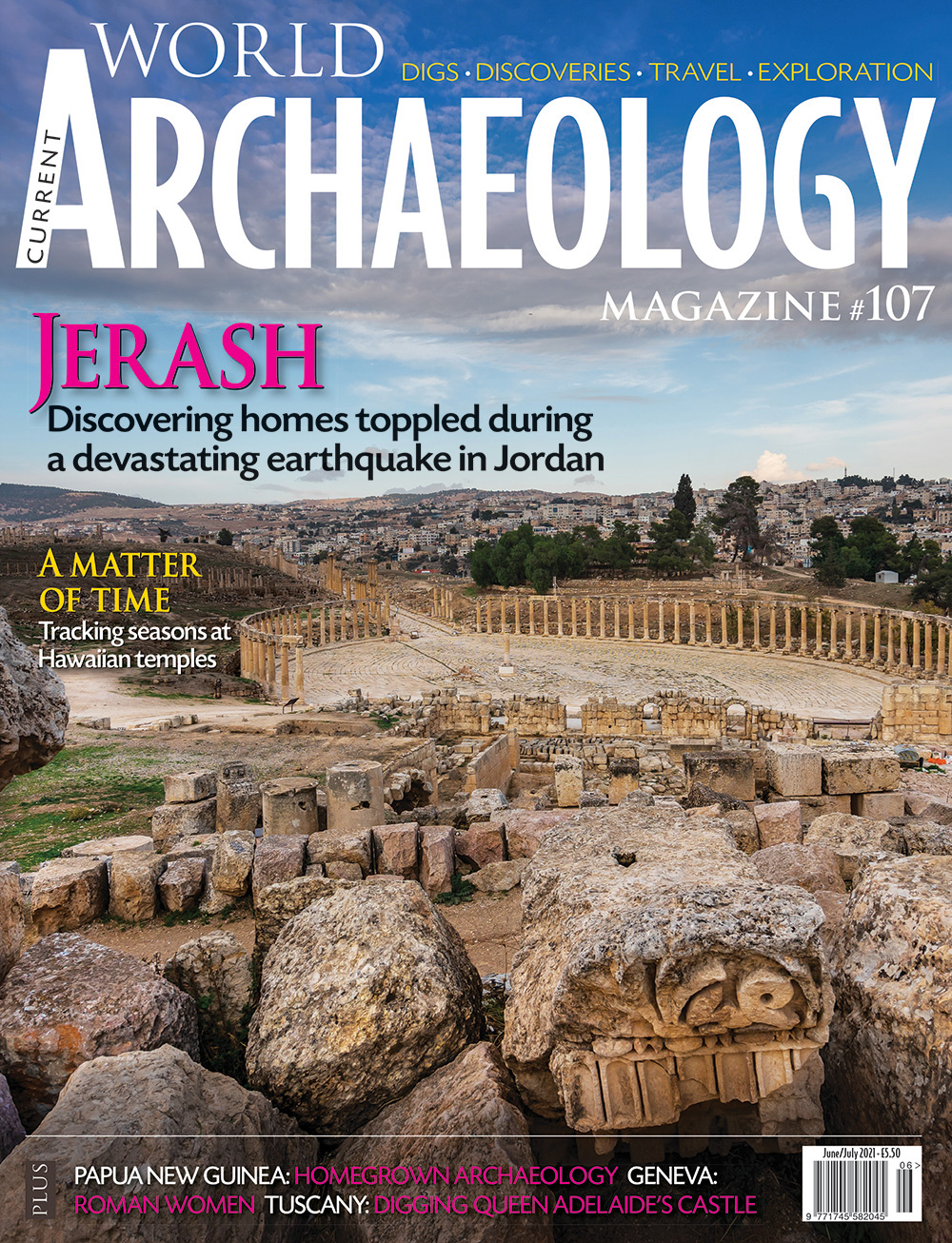In AD 749, the Middle East was struck by a devastating earthquake. Numerous cities suffered serious damage, including Jerash, which is now one of the most stunning archaeological sites in Jordan. Jerash never recovered
from the disaster, and recent excavations in the ancient city have revealed two houses that collapsed during the earthquake, providing a glimpse of life – and death – on that fateful day.
An arid patch of Maui, one of the Hawaiian Islands, is also home to archaeological sites that have remained largely untouched since they were abandoned. Taking a close look at Hawaiian temples, together with surviving historical accounts of their use, has provided a new sense of the vital roles that these monuments fulfilled.
Surviving texts – in this case ancient inscriptions – can also shed light on the lives of women living in Roman Geneva. This settlement, which developed where the River Rhône flows out of Lake Geneva, has produced records of women that span the social spectrum, ranging from slaves to a senatorial lady. Thanks to these finds, we can still feel the pride that accompanied a daughter becoming an imperial priestess, and attempt to untangle some complex relationships.
Using the material remains of the past to try and build up a picture of it is of course the bread and butter of archaeology. But while the discipline’s intellectual roots are usually deemed to lie in Europe, just how novel is this approach? A trip to Orokolo Bay, in Papua New Guinea, allowed Chris Urwin to see the ways that locals draw on traces of the past to illustrate their histories.
In our travel section, Richard Hodges reflects on the exciting finds made during excavations in Tuscany, and what they reveal about Queen Adelaide’s lost castle.

